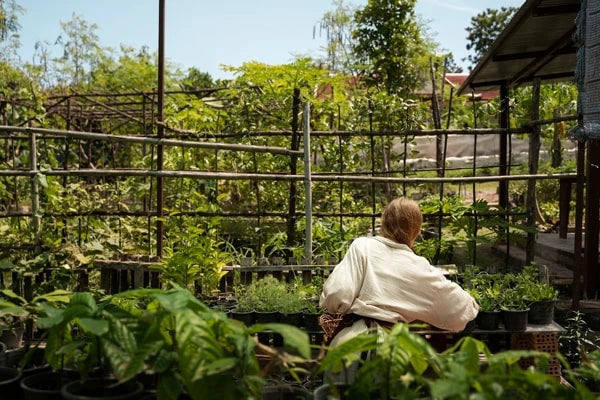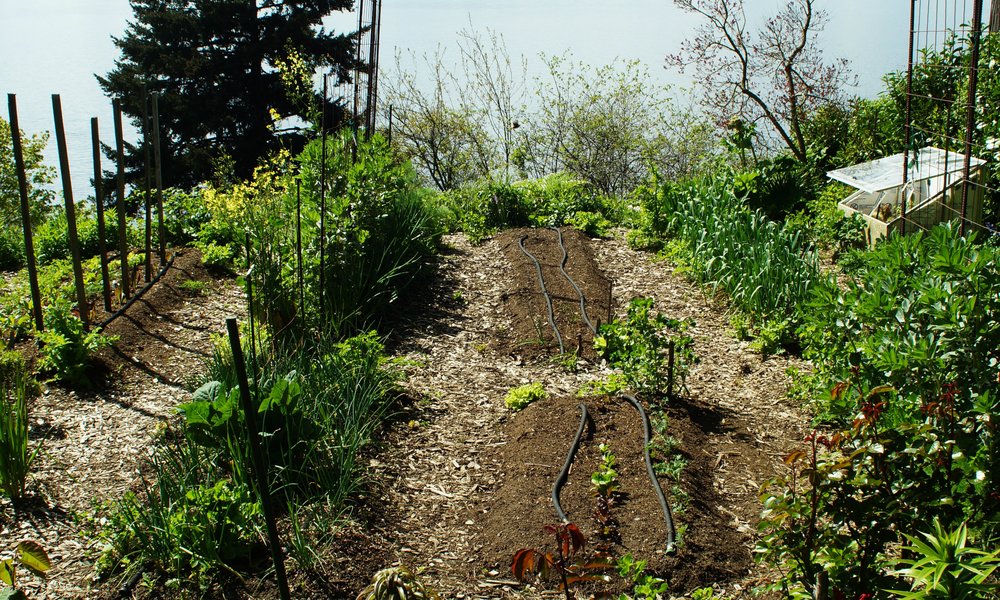The synergy between succulents and regenerative techniques lies in their complementary roles in fostering sustainable, resilient ecosystems. By integrating succulents garden into regenerative practices, you can enhance soil health, conserve resources, and support biodiversity. Here’s how succulents and regenerative techniques work together effectively:
Soil Health and Structure
- Erosion Control: Succulents, with their extensive root systems, help stabilize soil and prevent erosion. This is crucial in regenerative farming, where maintaining soil integrity is a priority.
- Soil Aeration: Succulent roots improve soil structure by creating channels that enhance aeration and water infiltration. This contributes to healthier soil ecosystems and supports the development of beneficial soil organisms.
Water Conservation and Management
- Efficient Water Use: Succulents are adapted to conserve water, making them an excellent model for implementing water-saving techniques in regenerative farming. Their deep roots and drought-tolerant nature highlight effective water management practices.
- Water Recycling: The principles of water conservation demonstrated by succulents can be applied to larger regenerative systems. Techniques such as rainwater harvesting and greywater recycling can be informed by the water needs and efficiencies of succulents.
Biodiversity and Ecosystem Health
- Habitat Creation: Succulents can create microhabitats that support a range of beneficial insects and organisms. This contributes to the overall biodiversity of a regenerative system, promoting a balanced ecosystem.
- Companion Planting: Succulents can be used as companions for other plants in regenerative systems. For example, they can provide ground cover that reduces weed growth and improves soil moisture retention.
Closed-Loop Systems and Waste Reduction

- Nutrient Cycling: Succulents can be part of a closed-loop system where organic waste, such as fallen leaves or spent potting mix, is composted and used to enrich the soil. This supports the regenerative principle of recycling nutrients within the system.
- Minimal Waste: The low-maintenance nature of succulents, combined with their ability to propagate easily, reduces the need for constant replacement and minimizes waste.
Educational and Experimental Insights
- Model Systems: Indoor succulent gardens serve as model systems for testing regenerative techniques on a smaller scale. This experimentation can provide valuable insights that are scalable to larger outdoor regenerative projects.
- Educational Tools: Succulents can be used to teach principles of sustainability and regenerative agriculture, such as soil health, water conservation, and closed-loop systems, making these concepts accessible to a broader audience.
Resilience and Adaptation
- Climate Resilience: Succulents demonstrate how plants adapt to harsh conditions, offering lessons in resilience that can be applied to regenerative farming practices. Understanding these adaptations can inform strategies for managing climate variability and building resilient agricultural systems.
- Resource Efficiency: The resource-efficient nature of succulents highlights how regenerative techniques can optimize the use of available resources, leading to more sustainable and self-sufficient farming practices.
Aesthetic and Functional Integration
- Design Aesthetics: Succulents add visual interest to regenerative systems, enhancing the overall aesthetics of the farm while providing functional benefits such as soil stabilization and water conservation.
- Functional Landscaping: Succulents can be integrated into landscaping designs that support regenerative practices, such as creating living mulch, ground cover, or natural barriers.
Carbon Sequestration
- Carbon Storage: Succulents, like other plants, sequester carbon dioxide from the atmosphere. Incorporating them into regenerative systems contributes to carbon capture and helps mitigate climate change.
Conclusion
The synergy between succulents and regenerative farming techniques demonstrates how these resilient plants can enhance sustainable practices in agriculture and gardening. By leveraging succulents’ water efficiency, soil benefits, and resilience, you can improve the effectiveness of regenerative systems, creating a more sustainable and harmonious relationship between plants and their environment.










